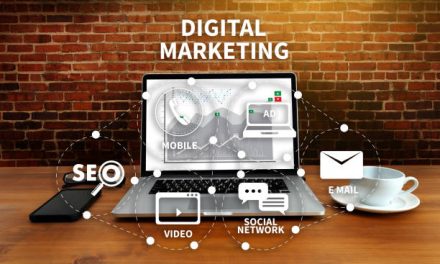In the fast-paced world of digital marketing, Search Engine Optimization (SEO) has become essential for companies and brands looking to enhance their online visibility, attract new customers, and build authority within their industry. Unlike paid advertising, which delivers quick but temporary results, SEO is a long-term, sustainable strategy for building organic traffic, strengthening brand reputation, and gaining customer loyalty.
SEO can be broken down into various types, each serving a different purpose but collectively contributing to a website’s visibility and success in search engine result pages (SERPs). This article explores the types of SEO in digital marketing, outlining twelve essential categories and explaining how each contributes to a comprehensive SEO strategy. Additionally, we’ll answer common questions about SEO, offering readers a deeper understanding of its role and benefits.
What is SEO in Digital Marketing?
In digital marketing, SEO refers to the techniques, methods, and strategies used to enhance a website’s performance in organic search results. SEO aims to make a website more appealing to search engines by optimizing elements such as content, keywords, technical settings, and backlinks, enabling it to rank higher for relevant searches. At its core, SEO is about aligning website content with what users are searching for and ensuring the site is accessible to search engines.
There are many components of SEO, each targeting different aspects of a website’s optimization. Successful SEO involves a balance of On-Page, Off-Page, Technical, and Content SEO—all of which play crucial roles in improving search engine rankings and attracting organic traffic.
12 Types of SEO in Digital Marketing
Each type of SEO addresses specific factors that influence a website’s ability to rank well in search results. Here’s a closer look at the twelve essential types of SEO in digital marketing:
1. On-Page SEO
On-Page SEO involves optimizing individual pages on a website to improve search engine rankings and provide users with relevant information. It includes:
- Keyword Optimization: Placing relevant keywords in titles, headers, and body text to help search engines understand the topic of the page.
- Meta Tags: Crafting optimized meta descriptions and title tags that accurately describe the page and attract clicks.
- Content Quality: Ensuring content is informative, engaging, and valuable to users.
- Internal Linking: Linking to other pages within the website to improve navigation and help search engines crawl the site.
2. Off-Page SEO

Off-Page SEO refers to actions taken outside the website to boost its authority and reputation. This often involves link-building, social media marketing, influencer outreach, and other tactics that build the website’s credibility. Key strategies include:
- Backlink Building: Earning links from authoritative sites, which signals to search engines that your content is valuable.
- Social Media Engagement: Promoting content on social media to increase visibility and engagement.
- Guest Blogging: Writing articles for other reputable websites and including backlinks to your own site.
3. Technical SEO
Technical SEO optimizes the backend structure of a website, ensuring it meets the technical requirements for search engine crawling and indexing. Key components include:
- Site Speed: Faster websites provide a better user experience, which search engines reward.
- Mobile-Friendliness: With the rise of mobile usage, sites that perform well on mobile devices have an edge.
- XML Sitemap: A sitemap helps search engines understand the website structure and index it more efficiently.
- Security (HTTPS): Websites with SSL certificates are preferred by search engines, as they indicate a secure browsing experience.
4. Local SEO
Local SEO focuses on optimizing a website for local search results, making it particularly valuable for businesses with physical locations. Key strategies include:
- Google Business Profile: Claiming and optimizing your Google Business listing, including accurate contact details and business hours.
- NAP Consistency: Ensuring that the business’s Name, Address, and Phone number are consistent across all online platforms.
- Local Keywords: Targeting location-specific keywords to attract local customers.
- Local Citations: Listing the business on local directories, which helps with visibility in local searches.
5. Content SEO

Content SEO focuses on creating valuable, relevant, and optimized content that engages users and aligns with their search intent. Key elements include:
- Keyword Research: Identifying and targeting keywords that are relevant to your audience.
- Content Structure: Using headings, bullet points, and images to improve readability.
- High-Quality Information: Providing insightful, well-researched content that answers user queries.
6. Mobile SEO
With the growing use of mobile devices, optimizing for mobile has become essential. Mobile SEO includes:
- Responsive Design: Ensuring the website displays well on all devices, including smartphones and tablets.Page Speed: Minimizing load times on mobile to reduce bounce rates.Mobile-Friendly Content: Structuring content for easy navigation on small screens.
7. E-commerce SEO
E-commerce SEO optimizes online stores to attract organic traffic and convert visitors into customers. Key strategies include:
- Product Descriptions: Creating unique, informative descriptions for each product.
- Category Pages: Optimizing category pages to target broader keywords and improve user navigation.
- Schema Markup: Implementing structured data to enhance product listings in search results.
8. Voice Search SEO

As voice searches become more common, Voice Search SEO focuses on optimizing content for conversational queries. This involves:
- Long-Tail Keywords: Targeting natural, question-based keywords that align with voice searches.
- Answering Questions Directly: Structuring content to provide quick answers to common questions.
- Local Keywords: Many voice searches are local in nature, so local SEO elements are often incorporated.
9. Video SEO
With video content becoming increasingly popular, Video SEO optimizes videos for search engines, especially platforms like YouTube. This includes:
- Titles and Descriptions: Crafting descriptive, keyword-rich titles and descriptions.
- Transcripts: Providing video transcripts to enhance accessibility and help search engines understand the content.
- Thumbnails: Creating compelling video thumbnails to attract clicks.
10. Image SEO
Image SEO focuses on optimizing images to improve a site’s visibility in image searches. Key tactics include:
- Alt Text: Adding descriptive alt text to each image, which improves accessibility and helps search engines understand the content.
- Compression: Reducing file sizes to improve page load times.
- File Names: Using descriptive file names with relevant keywords.
11. International SEO

International SEO optimizes websites to attract traffic from different regions or countries. This includes:
- Hreflang Tags: Tagging content for different languages to ensure the correct version appears in each region.
- Localized Content: Adapting content to fit cultural differences and preferences.
- Region-Specific Keywords: Using keywords relevant to each region.
12. Negative SEO Monitoring
Negative SEO refers to actions by competitors to harm a website’s rankings, such as building spammy backlinks. Monitoring includes:
- Regular Backlink Audits: Checking for suspicious links and disavowing harmful ones.
- Duplicate Content Checks: Ensuring unique content to avoid penalties.
- Monitoring Site Speed: Detecting any unusual slowdowns that could be a result of attacks.
Conclusion
A well-rounded SEO strategy incorporates various types of SEO, each addressing unique aspects of a website’s performance. By combining On-Page, Off-Page, Technical, Local, and other types of SEO, businesses can enhance their online presence, improve rankings, and drive sustainable traffic.
To maximize your SEO efforts, consider partnering with experts who can tailor strategies to your needs. Marketing Techology offers comprehensive SEO services and content marketing solutions to help businesses grow and thrive in the digital landscape.
Frequently Asked Questions
What is the role of backlinks in SEO?
Backlinks, also known as inbound or incoming links, are links from other websites pointing to your site. They are crucial for SEO as they signal to search engines that your site is reputable and valuable. The more high-quality backlinks a site has, the more authority it gains, which can improve its ranking in search results.
How often should SEO be updated?
SEO should be regularly updated to keep up with changes in search engine algorithms, competitors, and user behavior. It’s recommended to review and adjust SEO strategies at least quarterly. Regular updates might include refreshing content, adding new keywords, addressing technical issues, and building new backlinks.
Can I do SEO myself, or do I need an expert?
Yes, you can do SEO yourself with proper research and dedication. However, SEO can be complex and time-consuming, especially with advanced tactics like Technical SEO and Link Building. Hiring an SEO expert can save time and ensure that your SEO strategy is effective and up-to-date with industry best practices.






Your words have a way of resonating deeply with your readers Thank you for always being encouraging and uplifting